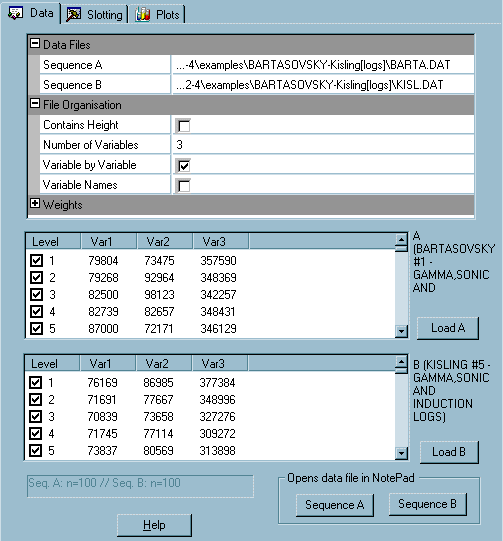 | Works with text files representing the two sequences
or successions to be correlated, typically in column based data formats.
|
 | Up to 20 variables from each succession is possible,
along with up to 1000 data levels from each succession. |
 | The sequence slotting algorithm uses a range of
distance metrics, and scaling options appropriate to the kind of data
used. |
 | Both short-range and regression-type statistics are
generated to evaluate the goodness of the correlations. |
 | The correlations can be constrained with a wide range
of correlation 'events', along with relative duration 'blocking'
constraints. |
 | A wide range of correlation smoothing options, using
polynomials and splines can be applied depending on the user
'correlation model' and noisiness of the
data. |
 | A range of textual and graphical (data, correlation,
sensitivity and H-matrix) information is generated to evaluate and
interrogate the
effectiveness of the slotting. |
 | Support in provided for constructing composite
successions or stacks from multiple records, and various kinds of data
interpolation. |
 | Extensive help system and many worked examples
based around all the main data-types, to illustrate key concepts. |
 | CPLSlot is designed with a range of clipboard-based - data exchange
functions with a spreadsheet program. |
 | All graphical displays can be exported (and
copy/pasted) in a variety
of portable formats (WMF, EMF, BMP, PS, EPS) or saved to disk for
later viewing. Full control over font types, and graphical elements.
Some graphical elements can be edited in-situ, and new floating text
added. |
 | The sequence slotting algorithm uses that extended
from Malcolm Clarks PCSLOT 1.6. |
 | Works under windows and is
self installing software, with extensive help. |




 Last
Update: 4/01/2010
Last
Update: 4/01/2010